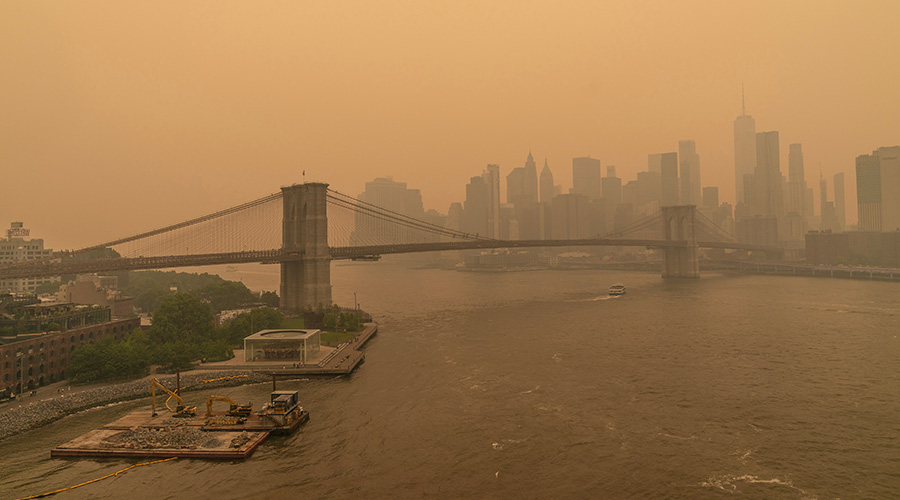Fire Protection System Challenges
Funding, installation and maintenance issues can present roadblocks for managers.
By Frank Rigas, Contributing Writer
When Jim McHugh attends a trade show and hears that an institutional and commercial facility’s fire protection system needs regular maintenance, he says, “Don’t repair the problem. Correct the problem,” he says
“You don’t want to go to shows and a guy says, ‘Well, you know, our system breaks like every three or four years,’” says McHugh, president of AGF Manufacturing, a fire sprinkler manufacturer. “I tell them, ‘Then you have a systemic problem. You don’t go in and fix that, you have a bigger issue.’ You need to sit down with the appropriate people and go, ‘Why is this breaking? Why are we having this service problem?’ It shouldn’t be like that. I think that it’s important for building owners to always question why.”
McHugh’s example illustrates the challenges and problems facing maintenance and engineering managers responsible for ensuring the safety of facilities and occupants.
Costs and concerns
Budgeting for installing and upgrading fire protection systems is often a challenge for managers and engineers, says Martin Anderson, senior national operations manager for fire at Siemens Smart Infrastructure USA, which offers installation and service for fire and life safety systems.
“Fire and life safety systems are not generating revenue for a company, so at times we see that gaining budget approval can be very difficult,” he says. “Ideally, these systems sit quietly until they are needed in an emergency, so there’s not a lot of visibility to them unless there are some type of service issues they’re experiencing.”
The lack of visibility of fire protection equipment also can lead to another problem: access, which McHugh says is sometimes difficult due to an accumulation of poorly stored physical items.
"Because these systems are out-of-sight, out-of-mind, it could be people (saying), ‘We don't mind piling up stuff against this door or against this room or in this room or against these valves and devices,’ because they don't really understand what these valves and devices do,” McHugh says. “They're not often used or touched, so they end up getting obstructed in some way. The various forms of obstruction are what I think causes a lot of people headaches and problems.”
Another aspect that managers might find difficult is how to plan the installation of a fire prevention system without disrupting a building’s operations. To do this, Anderson says managers need to work closely with their suppliers to schedule the work to be performed.
“In some cases, the new system must be installed in parallel with the existing system to maintain building protection throughout the installation,” he says. “In other situations, the system needs to be upgraded in phases while maintaining full system operation. When the system is not operational, a fire watch needs to be in place, which can be very costly.”
One of the most important factors managers should take into consideration when installing a system is knowing what is being protected.
“Sometimes, systems are planned or installed into buildings, and what is being protected is different from what was expected,” McHugh says. “Instead of it being people and office furniture, the actual building gets used for some form of chemical storage. I think one of the issues that facilities can be careful about is that the level of protection they have is adequate and appropriate to what they are actually protecting.”
Codes and standards
The National Fire Protection Association (NFPA), the International Building Code (IBC) and International Fire Code (IFC) collectively have established hundreds of codes and standards. The latter two are part of the International Code Council. The NFPA revises and updates its codes and standards every three to five years in revision cycles that begin twice each year, while IBC and IFC revisions occur every three years, according to their respective websites.
Anderson says managers should meet regularly with their suppliers to keep abreast of “the codes and standards that are adopted and enforced in the jurisdiction for maintaining their fire and life safety systems. The supplier should be an expert on the applicable codes and standards and needs to keep the manager updated on any changes within the jurisdiction, such as the adoption of a new edition of a specific code.”
For more on NFPA, IBC and IFC codes and standards, see the accompanying information box.
Maintenance and inspections
Managers must know about a number of elements regarding maintaining fire and life safety systems, Anderson says. These include:
- Understanding the requirements established by the NFPA, IBC and IFC codes and standards, and having the inspections performed by a professional, licensed company. In some instances, a facility might have technicians on staff who are trained and licensed to do the work.
- Inspections might need to be performed when they do not interfere with building operations.
- Recognizing there may be weekly, monthly, semi-annual and annual inspection requirements, depending on the systems installed in the facility.
McHugh says fire sprinkler systems and the components that comprise them typically are designed to last for 50 years, with an expectation that proper care and maintenance will be performed.
“The ongoing maintenance of a system is probably the single best cost-savings responsibility that a facility management owner or operator can deal with,” he says. “I think that’s probably, singularly, the most important step. (By) hiring the appropriately trained people to perform NFPA 25-level quality inspections on their systems, the system should then last certainly the building’s lifetime.”
Adds Anderson, “These systems are intended to be silent until needed, and a properly maintained system should always be ready to protect your personnel and property when an event occurs.”
Frank Rigas is a freelance writer from Sheboygan, Wisconsin.
Related Topics:












